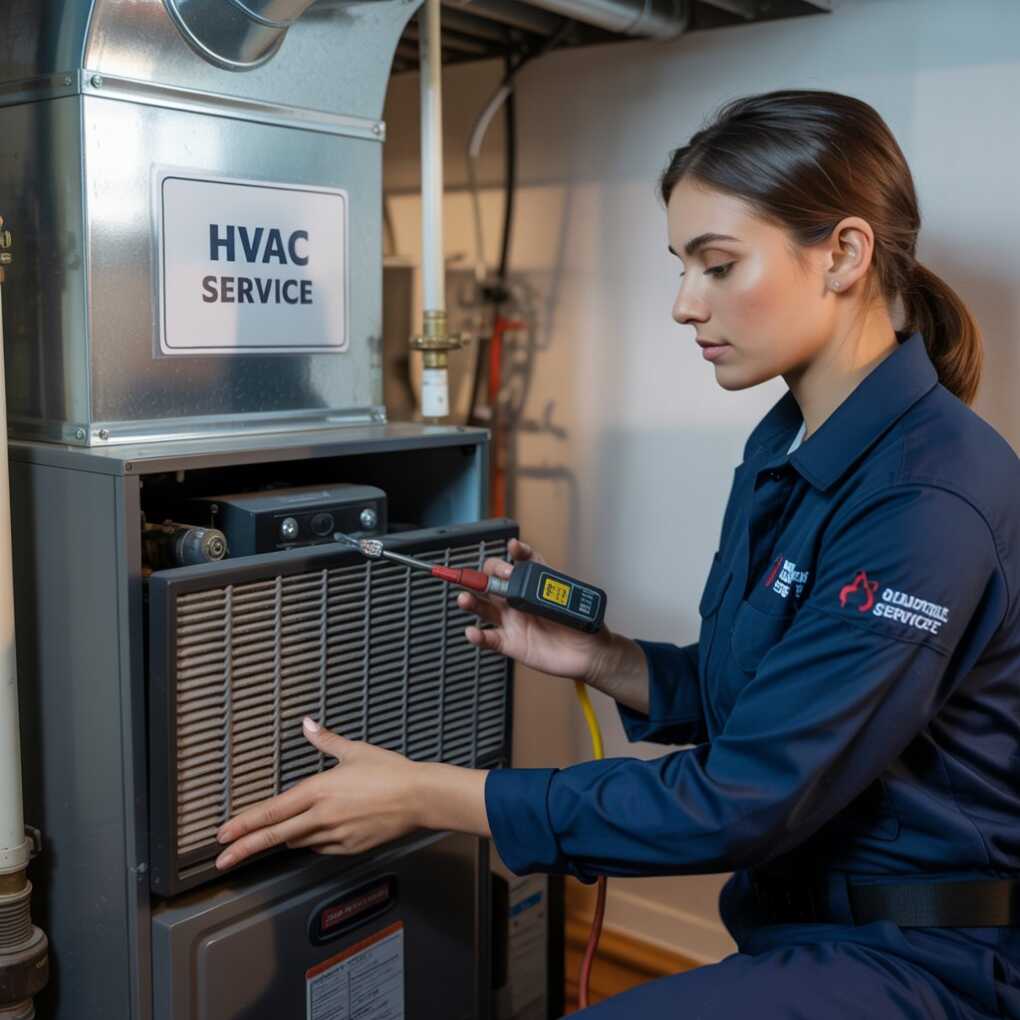Understanding how HVAC service works can make a huge difference in the comfort and efficiency of your home. Most homeowners interact with their HVAC system only when something goes wrong. However, regular service is essential to prevent issues, ensure consistent indoor temperatures, and avoid costly repairs. Whether it’s time for seasonal maintenance or you’ve noticed unusual noises or uneven cooling, a structured HVAC service visit follows a clear and organized process. We will explore the entire step-by-step journey of an HVAC service call to help homeowners understand what to expect and how each stage contributes to better performance and reliability.
When selecting an HVAC service provider, it’s crucial to choose a reputable company that understands the intricacies of the HVAC service process. For residents in Arlington, finding a reliable hvac contractor arlington can make all the difference in ensuring efficient and effective service. A skilled contractor will not only diagnose and repair issues promptly but also provide valuable maintenance tips to prevent future problems. By partnering with a trusted local expert, homeowners can enjoy peace of mind knowing their HVAC systems are in capable hands, ensuring comfort and energy efficiency throughout the year.

What Happens During a Complete HVAC Service Visit
Initial Contact and Service Request
The HVAC service process begins with the customer reaching out—either online or by phone—to schedule a service visit. During this interaction, the service team will gather essential details such as the make and model of the equipment, any recent issues, unusual noises, airflow problems, or changes in energy bills. A trusted HVAC company in Las Vegas makes this process efficient by asking targeted questions. Scheduling is then confirmed based on availability and urgency. If it’s a routine check-up, an appointment is usually set for a convenient day. If it’s an emergency, the team prioritizes a faster response. This phase ensures that the technician arrives prepared with the right tools, replacement parts, and knowledge to handle the situation effectively.
After understanding the HVAC service process, it’s crucial to find a reliable service provider to ensure your system runs efficiently. When searching for hvac near me, it’s important to choose a contractor with a proven track record of quality service and customer satisfaction. A local expert can provide timely assistance and personalized solutions tailored to your specific needs. Whether it’s routine maintenance or emergency repairs, having a trusted professional nearby can make all the difference in maintaining a comfortable and energy-efficient home environment.
Pre-Service Assessment by the Technician
Once the HVAC technician arrives at the location, the first step is a walk-through with the homeowner. This includes a brief overview of recent issues, a discussion about past maintenance, and a quick visual check of the unit. The technician will also ask about airflow consistency, strange odors, thermostat irregularities, or noises heard during system operation. This discussion helps guide the inspection process. Before any work begins, safety precautions are taken, including shutting off the system if necessary. The technician may also examine areas around the unit for leaks, obstructions, or structural signs of stress. This pre-service assessment allows for a better understanding of the potential scope of service needed, helping to narrow down issues quickly before moving on to hands-on diagnostics.
In addition to understanding the HVAC service process, it’s crucial to choose a reliable service provider. Southland Heating and Air offers comprehensive HVAC solutions tailored to meet your specific needs. Their team of experienced technicians ensures that every step, from initial inspection to final maintenance, is handled with precision and care. By selecting a trusted provider, you can ensure that your HVAC system operates efficiently, providing comfort and peace of mind throughout the year. Whether it’s routine maintenance or emergency repairs, having a dependable service partner can make all the difference in maintaining a comfortable home environment.
Comprehensive Diagnostic and Performance Check
The diagnostic phase is a key part of the HVAC service visit. Using meters, gauges, and software tools, the technician evaluates critical parts such as the compressor, blower motor, condenser coil, and electrical components. Pressure readings, voltage output, refrigerant levels, and airflow strength are measured precisely. For heating systems, combustion levels, pilot light functionality, and gas valve operation are also checked. In addition, the air filters are reviewed and replaced if dirty, as clogged filters reduce system efficiency and strain components. This phase helps identify inefficiencies or failures that may not yet be visible to the homeowner. The technician may also check the thermostat’s accuracy and recalibrate it if it’s giving false readings. Each of these checks ensures the system is operating safely, within acceptable performance limits, and without putting unnecessary stress on its parts.
In the HVAC service process, it’s crucial to ensure that all components are functioning optimally to maintain a comfortable indoor environment. For residents in Maryland, finding reliable services is essential. If you’re experiencing issues with your system, consider reaching out for ac repair silver spring to address any concerns promptly. This step is vital in preventing minor issues from escalating into costly repairs. Regular maintenance and timely repairs not only extend the lifespan of your HVAC system but also enhance its efficiency, ensuring your home remains a haven of comfort throughout the year.
During the HVAC service process, it’s crucial to ensure that all components are functioning optimally. Technicians will inspect and clean filters, check refrigerant levels, and test the system’s efficiency. This thorough examination helps in identifying potential issues before they escalate, ensuring a comfortable and energy-efficient environment. For those interested in learning more about the intricacies of HVAC maintenance and finding reliable service providers in your area, you can Read more to explore detailed insights and local options. This step-by-step approach not only prolongs the lifespan of your HVAC system but also enhances its performance, providing peace of mind and comfort year-round.
Cleaning and Preventative Maintenance
After diagnostics, the technician performs a thorough cleaning of both indoor and outdoor components. Dirt and debris on condenser coils or evaporator fins can reduce cooling power and increase energy consumption. The coils are cleaned using approved solutions to restore efficiency. Drain lines are flushed to prevent clogs and potential water damage. Moving parts, such as fan blades and blower wheels, are wiped down to avoid dust buildup. Lubrication may be added to motors or bearings that require it, reducing wear and tear. For gas furnaces, burner assemblies are inspected and cleaned for optimal ignition. Electrical connections are tightened to prevent shorts or fire hazards. During this phase, the technician may also review ductwork for signs of leakage or obstruction. Cleaning and routine tune-ups like these can significantly extend the life of the system and maintain consistent airflow and temperature control throughout the home.
Discussion of Findings and Recommendations
Once the system has been cleaned and serviced, the technician shares a full report with the homeowner. This includes what was checked, what was cleaned or repaired, and any parts that may need replacement soon. If there are signs of aging components or minor issues that could become serious later, they’re flagged for future service. In some cases, the technician may recommend system upgrades—such as installing a programmable thermostat, sealing ducts, or replacing outdated equipment to improve efficiency. The company ensures this conversation is transparent and helpful, not sales-driven. The technician also answers any homeowner questions and provides practical suggestions for maintaining the system between visits, like how often to change filters or how to recognize early warning signs of trouble. This wrap-up ensures homeowners leave the service call more informed and in control of their home comfort system.
Conclusion
The HVAC service process is far more detailed than many realize. From the initial phone call to follow-up documentation, each step plays a role in ensuring long-term comfort and efficient system performance. Companies help homeowners stay comfortable year-round by providing transparent and well-organized service processes that focus on reliability. Understanding what happens during each service visit empowers homeowners to take a more active role in their home’s air quality and energy use. Whether you’re scheduling seasonal maintenance or responding to a problem, knowing what to expect helps create confidence in the service you receive.
